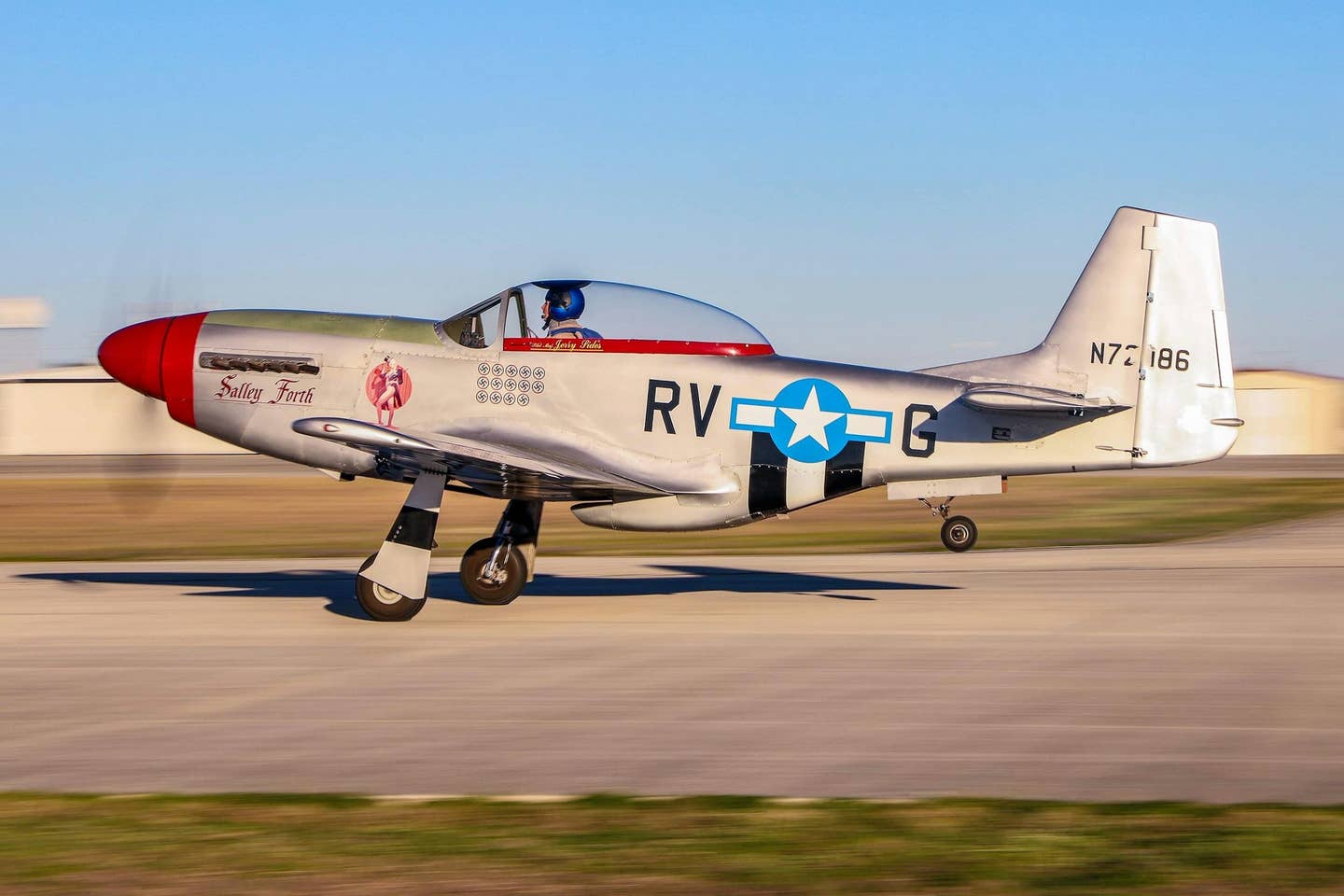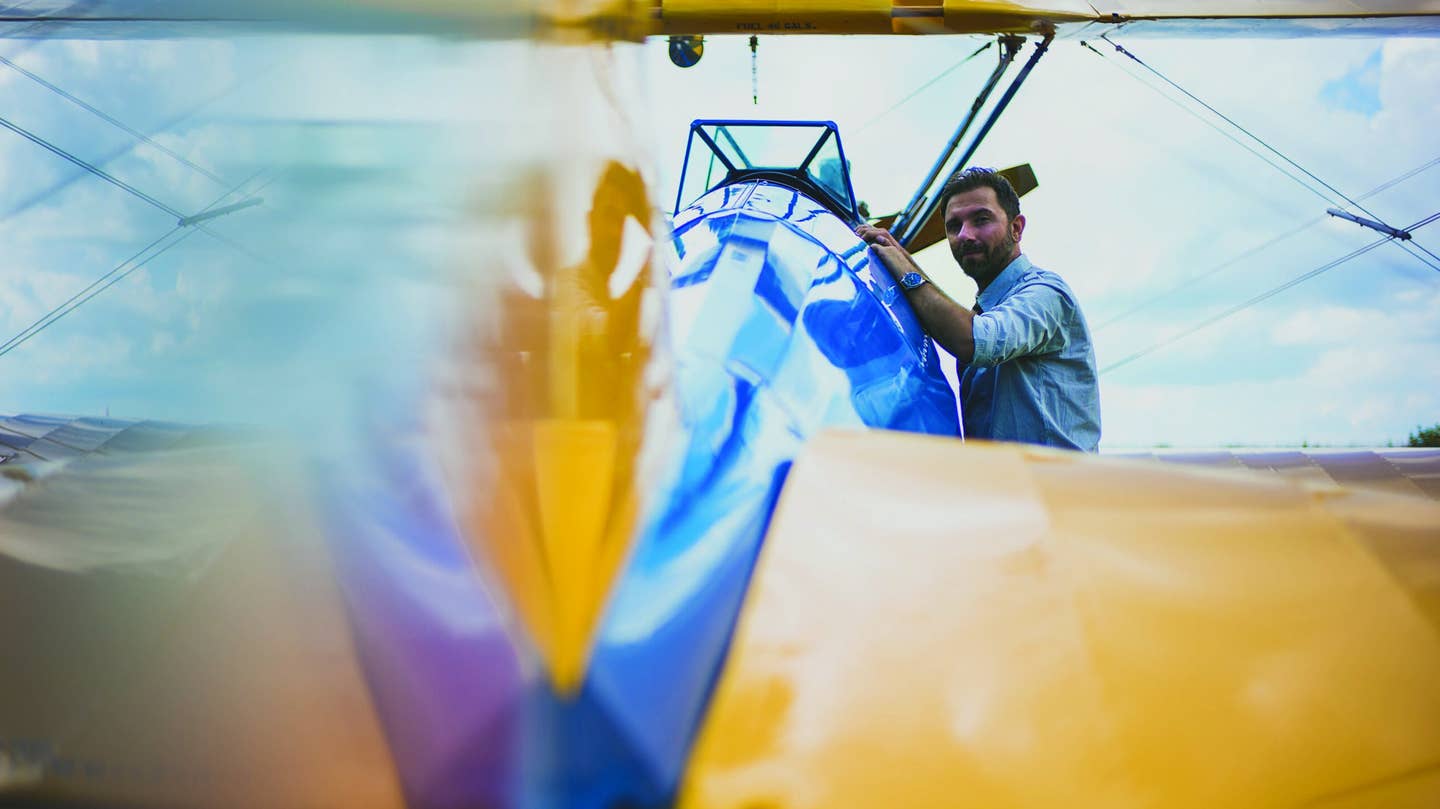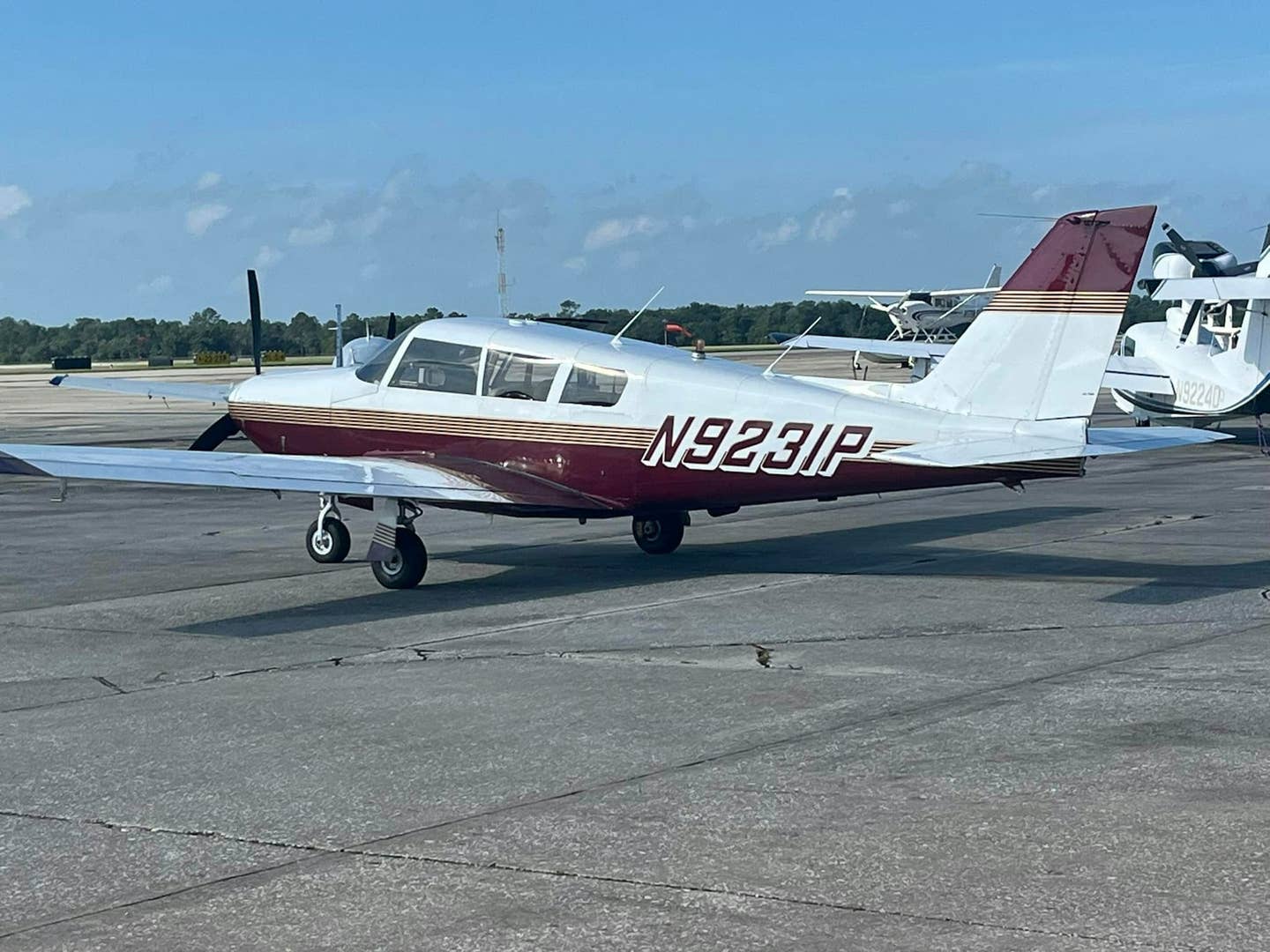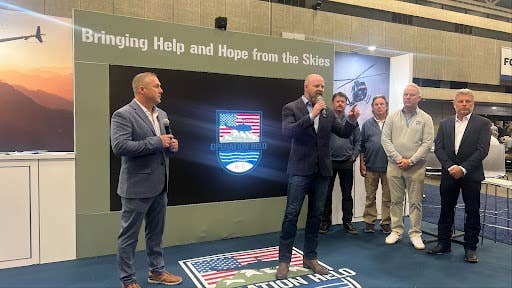
(August 2011) It's certainly not hard to understand the allure of a new airplane. There's nothing quite like the smile on the face of a buyer who has just been handed the keys to a brand-new bird. There's an undeniable pride of ownership there, along with other advantages. New airplanes have the latest features, they're known quantities with no damage history and (one hopes) no surprises, and they confer certain tax advantages, as well as warranties and often other perks, from free flight training to bonus equipment.
Likewise, the upside of used airplanes is obvious. They’re great deals. You can buy a decent used Skylane, for example, for about one-quarter the cost of a new one. But with that come uncertainties as to the provenance of the airplane, the way its engine or engines were treated, the mystery ailments that might be lurking within only to emerge full-blown five hours after you’ve taken delivery.
The solution to this is to get a used airplane and put it through a complete makeover. While you can’t really get down to the bucked rivet level, you can get awfully close to that. You can also add a lot of features, like LCDs and terrain avoidance systems that a 1966 Mooney, for instance, would have lacked because those systems had not yet been invented.
The airplanes we're featuring here — there are more on the iPad edition of Flying — run the gamut from a modernized multimillion-dollar bizjet to a gussied-up grass strip classic. And not all of them are museum pieces. Some are works in progress, with clear room to get even shinier. We want to celebrate the fact that, when it comes to refurbishing good used airplanes, you don't have to do it all at one time. In most cases, the installment plan works just fine.
Spiffed-Up Citation
Sierra Cessna 501-SP Stallion
When it comes to doing bizjet refurbishments, there are few players out there with the experience of Sierra Industries. For the past 20 years Sierra Industries (sijet.com) has been taking last-generation Citations and making them not as good as new but demonstrably better than new with the addition of next-gen engines, aerodynamic modifications and avionics upgrades. One of the company's best-sellers has been its Stallion conversion for the Cessna Citation 501-SP, the single-pilot version of the venerable straight-wing Cessna jet. This is, by the way, the only airplane in our refurb lineup that isn't privately owned (though that will likely change within a few days of this story hitting the stands).
While Sierra customers can do as much or as little to their Citation as they’d like, the Stallion featured here has gotten the entire treatment: engines, avionics, interior and paint. And more. In the end, the customer winds up with a gorgeous hot rod of a Citation with flat-panel avionics, performance that’s competitive with that of new jets costing twice as much and an interior that’s roomy and luxurious.
The engines are the Williams FJ44-2As, which put out 2,300 pounds of thrust a side and feature a mechanical engine control system that’s like full-authority digital control for much-improved ease of operation. The performance improvement is tremendous. At better than 400 knots true (50 knots faster than the original) and with a full fuel payload of 1,670 pounds, the Stallion takes a decent airplane and makes it faster, stronger and longer-legged (1,400 nm IFR range) to boot.
Moreover, the FJ44s are quieter and far more fuel-efficient than the original Pratt & Whitney JT15D-1As on the Citation. The sexiest part of the conversion is surely the panel. The modification takes a Garmin G1000 panel and marries it to the 501-SP, making it look for all the world as though it was made for the airplane. Our featured airplane has a dual air data attitude heading reference system, dual PFDs, a center MFD with moving map, FMS, satellite weather, navcoms and WAAS GPS, radar display, and a pedestal-mounted FMS keyboard. There are also Sierra’s Meggitt electronic engine instrument displays and a digital all-in-one standby instrument. It’s a fabulous panel by any standard.
The interior is also completely redone, with rebuilt seats, new carpet and upholstery, refinished galley, tables and lighting, and more. The nearly 13-foot-long cabin is one of the best selling points of the Citation to begin with, with a great galley, optional lavatory and room for seating seven to eight in great comfort.
At around $2.75 million with everything you see here, the Sierra Stallion is a lot of airplane for a price that makes the refurbishment option sound smart indeed.
Baron Before and After
Beechcraft B58 Baron
When Christopher Leonard began looking at upgrading from his late-model Cessna Skylane to a new G58 Baron, he realized he had a problem. The roughly $1.3 million twin from Hawker Beechcraft is undeniably shiny and new, and it has all the bells and whistles, but the price tag was just too high for Leonard to go it alone. He thought briefly about finding a partner for the twin, but partnerships carry their own risks and disadvantages. So he decided to try a third option: buy a used Baron and make it as much like a new one as he could. The goal: to get the Baron in like-new shape for one-third the cost of a new one.
To that end he bought a 1990 58 Baron and got to work with the plans. It had some strong points to begin with, including relatively low total time (just over 2,000 hours), relatively new Teledyne Continental IO-550 engines (Leonard added GAMIjectors right off the bat), known-ice approval, air conditioning and a good autopilot (the Bendix/King KFC 220). But it wasn’t looking close to new anymore, and Leonard wanted to do something about that, as well as to modernize the panel and the interior.
One of Leonard’s primary concerns was getting the job done in a reasonable length of time. Luckily, he found a refurb shop, Tejas Aero Services of San Marcos, Texas, that was able to do both paint and interior and to work with Crystal Avionics of nearby New Braunfels to do the radio work on site in San Marcos during airplane downtime. The entire job, believe it or not, got finished in just eight weeks.
The results seem to speak for themselves, but if you had X-ray eyes, you’d see the quality of the work is more than skin deep. Tejas started with a complete strip and prime, followed by three coats of base paint with additional coats for the color. The scheme was inspired by one done by Scheme Designers. Leonard drew up the first sketch, and the folks at the software company smoothed out the edges for him. The interior features new wool carpeting, completely rebuilt seats with new padding and covering, AmSafe seat-belt airbags for the front two seats, new lights and window surrounds.
The avionics are anchored by the Garmin G500 with synthetic vision (SVT), the GAD-43 to drive the autopilot (instead of the iron gyro), upgraded GNS 530 (to WAAS), new 430W, a PS Engineering Bluetooth-capable audio panel, the JPI EDM-760 engine-monitoring unit, new powder-coated panel, Garmin GDL-69 satellite weather receiver, a panel-mounted Garmin 696 in an AirGizmos mount and more.
The result is an airplane that offers much of the comfort and capability of a new Baron but at just about that one-third cost of a new Baron that Leonard was originally shooting for. And for Leonard, it’s a great way to get around with better speed, carrying capacity and comfort than the 182 had and with the security of two engines and known-ice approval.
Mighty Mod
Mooney M20E
Looking at N4MY, it's hard to believe that it is a 45-year-old airplane. The paint is like new, the interior spotless and the panel technologically light years ahead of the original.
Mike Young purchased this 1966 Mooney M20E about 20 years ago. He had owned several airplanes before, including a Stinson 108-1 and a Bonanza, but he specifically wanted a Mooney with manually retracted gear because of the simplicity of the system.
When Young bought the airplane in the early 1990s, it was a stock M20E, and he flew it for almost 10 years before he began making numerous structural STC’d modifications.
“I did it for the looks,” Young says, “and the by-product was that the airplane became faster and more efficient.”
Young essentially turned the M20E into the more aerodynamic, LoPresti-designed 201 by altering the wingtips, nose cowl and windshield, and adding fairings and gap seals all around the airplane. N4MY has a foot-longer wingspan than its unmodified siblings and is sculpted with smooth lines instead of the original angled design.
After all the structural modifications, the paint needed to be taken care of. Young chose a forest green, beige and white paint scheme similar to one he had seen on a Rockwell Commander.
With the exterior better than new, Young focused his attention on the interior. He chose cream-color leather for the seats, plastic for the side panels and a beige carpet with a tightly knit weave for better wear.
When Young experienced a minor prop strike, he took the opportunity to completely overhaul the engine and add a Hartzell three-blade propeller, which, in Young’s words, “makes the airplane look a heck of a lot sexier,” helps the engine run smoother and also improves the performance.
Through the years, Young has made many modifications to the panel. The panel modifications really kicked into gear when he joined Garmin’s sales team, and today the airplane provides all the gizmos a pilot could wish for. A Garmin G600 glass-panel system with synthetic vision dominates the pilot’s side. It communicates with WAAS capable, TAWS-B certified Garmin GNS 530W and GNS 430W GPS/navcom systems located in the center stack. Prominent on the right side of the panel is a JPI EDM 930 engine-monitoring screen that displays all engine parameters including fuel flow, rpm, manifold pressure and electrical output. The installation was completed by Advantage Avionics in Chino, California.
While Young feels that his Shadin Avionics fuel-flow/air-data unit is redundant since the Garmins and EDM 930 include the same information, he likes being able to display data not currently shown on the other screens. Another added safety feature is the electronic CO Guardian carbon monoxide detector, located on the far right side of the panel.
Young is 5 feet 8 inches, so he fits perfectly into the cabin of the M20E — which he feels is the ultimate airplane for him because of its good speed and low fuel consumption. He can count on about 156 knots while burning 10.9 gallons per hour.
“It’s a keeper,” Young says of his airplane. “It’s hard to beat with the fuel prices these days.”
But with all the speed mods, the airplane is a little hard to slow down, so Young is now eyeing Precise Flight speedbrakes as his next upgrade.
Dream Machine
Beechcraft A36 Bonanza
You may wonder why an airplane this new would be included in an article about refurbishing. But this Bonanza has had a major makeover in its fewer than 10 years in the air. When Phil Boyer was looking for an airplane to enjoy during his retirement, he considered new airplanes and twins. He wanted something that could go high and get to places fast, at an affordable cost.
After doing some deep thinking and considerable research, Boyer went searching for a Beechcraft A36 Bonanza. He decided on a used A36, but one built more recently than the year 2000 since he felt that the only significant change since then was the addition of the G1000 avionics panel. He knew he could find a used one for much less than the price tag for a new Bonanza without the modifications Boyer was searching for.
One of Boyer’s requirements was an anti-ice system, and he found a 2002 A36 — N268EA — in late 2008 already equipped with a CAV Aerospace TKS system, also known as the weeping wing. The airplane also had undergone the Tornado Alley “Whirlwind” upgrade for the Bonanza — a modification that added a turbo normalizer for the engine as well as a built-in oxygen system, tip tanks for extra fuel capacity, turboGAMIjectors fuel injectors and a JPI engine-monitoring system — a feature Boyer finds important for any single-engine airplane but extra critical for him because he likes to fly lean of peak.
After he purchased the Bonanza, Boyer upgraded the Tornado Alley conversion with the recently released Rammer II intercooler. Tornado Alley claims a 15 to 20 percent improvement in intercooling efficiency for the Rammer II compared with the original Rammer system.
While the panel was already well equipped with a Garmin GNS 530/GNS 430 center stack, an HSI and a Garmin GTX 330 Mode-S transponder with TIS-B traffic, Boyer wanted to make some upgrades. He added WAAS to the Garmin units and installed a Garmin GMX 200 MFD, which he extracted from a Cessna 172 that he has since sold. Having flown glass in the past, he later decided to remove the standard six-pack, and as a board member of Aspen Avionics, the three-tube Evolution 2500 total glass cockpit system was an easy choice for Boyer.
N268EA also is equipped with a Bendix/King KI256 attitude indicator, which is linked to the KFC225 autopilot. When Cincinnati Avionics installed the Aspen system, the HSI and altimeter were required as backup instruments. Boyer said this requirement is going to be eliminated soon, but he will leave the round gauges in place.
One benefit the Aspen system offers is its ability to link to most navigation systems — a feature Boyer likes in case he wants to make changes in the future. He is soon going to have the EA100 digital autopilot interface installed, which will send the attitude information from the Aspen system to the autopilot. He is also planning further upgrades with either an Avidyne or Garmin active traffic system.
Beautifully Basic
Aeronca Champ 7AC
When this baby rolled out of Aeronca (derived from Aeronautical Corporation of America) Champion Corp.'s Ohio factory brand spanking new in 1946, who could know that nearly 65 years later it would emerge one beautiful spring morning from a Tampa, Florida, T-hangar better than new? And just in time to enter and win Best Custom Classic (1945-1955) in the 0-100 hp category at this year's Sun 'n Fun.
“One day a couple of years ago, I decided to Google the N-number of the first airplane I flew as a kid, a Champ 7AC,” says commercial-rated pilot John Murray, a Tampa attorney specializing in aviation accident litigation whose love for flying took flight in N3066E. “Turns out, the airplane was in Columbia, South Carolina. It had lost power and landed in a cotton field and nosed over. AIG totaled it and had it up for auction. I submitted a bid and I won.”
Murray then had the Champ trailered from Columbia to the T-hangar at Tampa’s Peter O. Knight with the plan to restore it with his own hands. Quickly he realized that restoration work would require full-time attention (time he didn’t have) if he were to ever finish the project. Through hangar talk, a buddy recommended Michael Mock — a longtime aviation enthusiast and pilot with a list of airplane (and antique car) restorations in his logbook — and Murray recruited him for the job.
Mock got the bug as a teenager when he and his father restored their PT-19. Then, over the years, he owned and restored a Tiger Moth, built a Christen Eagle II and built two Auburn Speedsters and a Ford T-Bird, to name a few.
“When I saw the Champ, my first thought was ‘This airplane has been ridden hard and put up wet,’” recalls Mock. “But when John mentioned he was committed to restoring it because it was his first logbook entry and asked if I’d take it on, with him helping me when he could, I just couldn’t refuse.”
All parts were removed from wing spars and checked for cracks, applying new spar varnish where needed. All metal parts, such as the new leading edge, on the wings were epoxy-primed. The airframe was entirely blasted and powder-coated, tail feathers blasted and primed with epoxy, and new windows and cowlings fabricated. (If Mock couldn’t restore it, he replaced it with a new part). Mock and Murray used epoxy primer and Imron polyurethane coating on all the metal parts, and poly-fiber with Ranthane top coat on the fabric.
Then there was the airplane’s original paint scheme. With the original drawings maintained by aeronca.com in hand, Mock followed the distinctive scheme to a tee, from the paint formula down to the size of wing numbers, lettering, and logo on the wings and empennage.
Inside, Mock replaced the interior with new fabric-covered seats and panels, a new panel with original instrumentation (including the fuel gauge from a Model A Ford) and a beautifully varnished mahogany floorboard. Completing the picture, Mock installed the overhauled Continental A65-8.
“I’ve restored some extremely interesting airplanes, but this one really has my heart,” Mock says. “The smaller airplanes take you back to the basics of flying, and that’s why I love them so much. That and bringing people’s visions for these airplanes to reality.”
Some 1,200 hours later, on March 12, Murray’s vision turned to a test flight that went off without a hitch — and just in time for Sun ’n Fun.
The factory price tag for an airplane like N3066E six decades ago was just shy of $3,000. Today you can find a decently restored one for around 10 times that, making it an affordable option for any pilot on a budget seeking a classic stick-and-rudder airplane that will provide loads of fun flying for a couple of decades or more with minimum maintenance. Plus, the 7AC is among the standard-category aircraft that meet the LSA definition, making it a great option for sport pilots.
Admittedly, you’d be hard-pressed to find one in as pristine condition as Murray’s reincarnation of the airplane of his youth for $30,000. He would reveal only that he has it insured for $50,000, and that the work put into it to meet his sentimental standard was worth every penny. And, ironically, possibly that’s why he thinks its first award wasn’t the Grand Classic. “Michael probably did it too well,” he says.
“EAA judges said it was too nice, nicer than it would have come out of the factory.”

Sign-up for newsletters & special offers!
Get the latest FLYING stories & special offers delivered directly to your inbox






